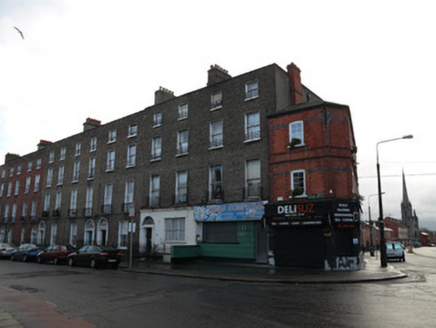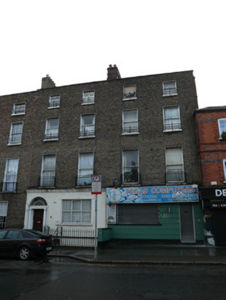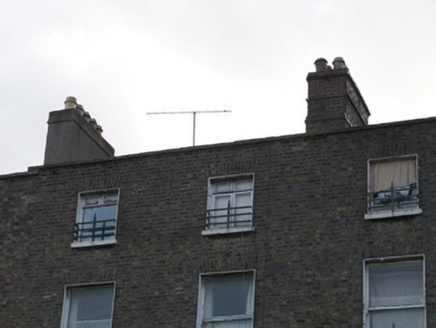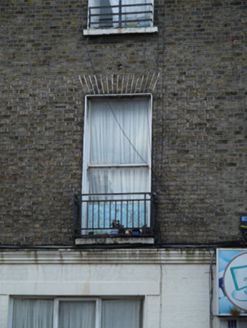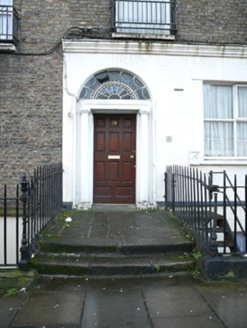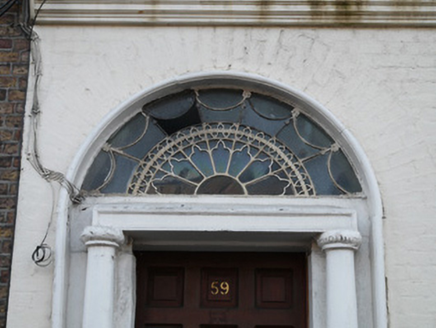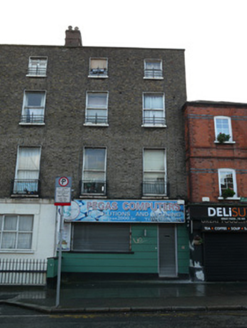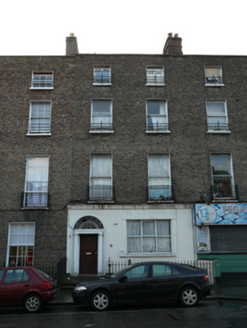Survey Data
Reg No
50070445
Rating
Regional
Categories of Special Interest
Architectural
Original Use
House
In Use As
Apartment/flat (converted)
Date
1780 - 1820
Coordinates
315388, 235407
Date Recorded
09/12/2012
Date Updated
--/--/--
Description
Pair of terraced two-bay four-storey over basement former houses, built c.1800, now in use as flats with shop to ground floor of No.58. Pitched M-profile roof, hipped to west, hidden behind continuous parapet to front (north) elevation. Cut granite coping. Brown brick and rendered chimneystacks. Brown brick walls laid in Flemish bond. Cut granite plinth course over rendered walls to basement area of no.59. Front basement area to no.58 infilled. Painted brickwork and cornice to ground floor of No.59. Recent channelled render to ground floor of No.58. Brown brick laid in English garden wall bond to rear elevations having recent red brick to third floor of No.59. Rendered walls to west elevation. Square-headed window openings having painted cut stone sills and patent reveals. Cast-iron balconettes to first floor windows. One-over-one pane timber sash windows. Replacement uPVC window to basement, ground floor and third floor of No.59. Three-over-three pane timber sash windows to third floor. Mixed one-over-one pane timber sash windows and replacement windows to rear elevations. Round-headed stair windows to rear elevations, having replacement windows. Round-arched door opening to no.59 having painted masonry surround with engaged Doric columns supporting plain frieze. Cobweb fanlight and timber panelled door. Cut granite steps to entrance platform having cast-iron railings and corner posts. Basement area to No.59 enclosed from pavement by cut granite plinth wall with cast-iron railings. Recent external metal stairs provides access from entrance platform to basement. Metal shutters to shopfront of No.58.
Appraisal
This pair of houses makes an important contribution to the streetscape. The proportions and details are shared with neighbouring houses on Blessington Street resulting in a coherent terrace. Both houses retain early fabric and form including structural brickwork and vertical diminishing windows. Although the windows are a later addition, as such large panes were not available in the Georgian era, the retention of timber sashes gives a pleasing depth and texture to the facade. Blessington Street was laid out in the late eighteenth century. It terminates to the west end at Blessington Street Basin, constructed in 1810 as a city reservoir supplied from the nearby canal, it is now a public park.
